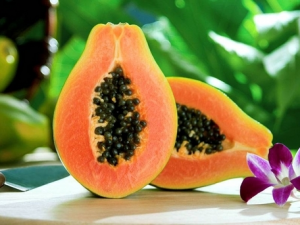According to the Bureau of Labor Statistics, tendonitis causes more than 70,000 people to miss work per year. This is just one of many reasons why it is important to understand the symptoms of tendonitis so that you can avoid not only the pain but the inconvenience it...
LATEST BLOGS
Husband and Wife of 54 Years Undergo Joint Replacement Surgeries On The Same Day
Premier Orthopaedics surgeon, Dr. Jonathan Garino, performed back-to-back procedures on a couple who have been married for 54 years! They shared their same-day surgery journey at the MUVE Center with @6ABC. Watch the incredible story below. Read the full ABC6 story...
What are Non-Surgical Treatment Options for a Herniated Disc
The spine consists of 26 bones called vertebrae and between them are cushion-like pads called “intervertebral discs”. The discs serve as shock absorbers for the vertebrae and help provide stability to the spine. When one of these intervertebral discs loses its normal...
Top 5 Steps to Free Joint Pain

Joint pain is among the top concerns within the health community, and for good reason. Half of Americans over the age of 65 suffer with joint pain and symptoms of arthritis. This is over 70 million people, which is more than the entire population of the United Kingdom. Taking preventative action to remedy any pain within the joints and bones is critical: even making choices today if you are suffering will alleviate your symptoms dramatically. Medications do not heal and resolve the issue, and physical therapy becomes a reliance. Did you know that certain foods contain vitamins and minerals that actively promote healthy joints and bones? It really is as easy as spotting the right choices to make when shopping at the grocery store or dining out for a meal with family and friends.
The benefit of integrating healing foods into your choices is that your body is receiving a naturally derived source of “medicine” from Mother Nature. Our cells and functions know how to assimilate and properly distribute the contents of the food we eat to the places that need it most. Some of the necessary nutrients for joint and bone health include: magnesium, vitamin D, a balance of vitamin C, and calcium. Many of the same nutrients for bone building are imperative for joint health because bones are the framework that each joint is suspended within. By supporting your bones, you are actively benefitting your joints as well.
We’ve researched and discovered the five best sources of strengthening, healing, and rejuvenating nutrients for healthy joints and why they are effective in fighting arthritis, osteoporosis, and general pain.
Leafy green veggies, nuts, and bananas for Magnesium
Magnesium is a mineral that directly assists potassium in building bone mass – a major contributor to joint pain. In a scientific study, researchers found that patients who consumed more magnesium in their diets had higher bone density (weight and mass) than those who did not. Bananas are a sweet source of magnesium, while nuts pack a protein and mineral punch. Leafy green veggies are easy to add to soups and dishes to up your bone building power.
Get pampered with Papain in papaya
Papain is an enzyme within the papaya fruit that has medical professionals astounded. Not only does Papain directly contribute to anti-inflammatory processesin the body, it also speeds healing and boosts circulation to ease pain around the joints and bones. This fruit is packed with fiber and antioxidants to refresh your immune system.
Similarly, a study was done on cherries that found when patients drank pure cherry juice the reactive protein which contributes to arthritis was significantly lowered in the body.
Watch Vitamin C to stay pain free
Eating more fruits to stay healthy can assist in healing and have antioxidant benefits for your body, but may also contribute to bone and joint pain. Conflicting studies have shown that anintake of little to no vitamin C is directly related to rheumatoid arthritis later in life, while a high intake can cause bone spurs.
The best advice is to moderately consume vitamin C and stick to the USDA guideline of 75 milligrams for women, and 90 milligrams for men per day.
Vitamin D is not for deficiency
Vitamin D is a major player in the bone health field; the absence of this essential vitamin can rapidly degenerate your bone mass. By maintaining a steady intake of the USDA’s recommended amounts of vitamin D, you lower the chances of having joint pain and issues by 33%.
Expose your skin to sunlight for 15-25 minutes per day to achieve this nutrient requirement.


